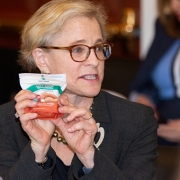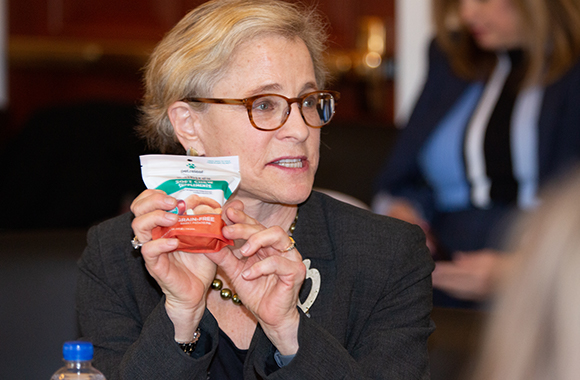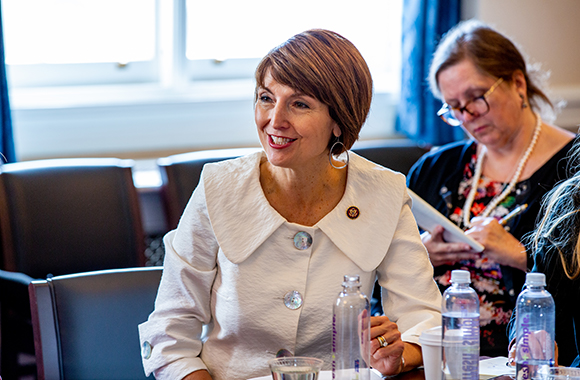Florence Kelley is smiling down upon Congress this week

NCL’s Florence Kelley, the towering reformer who headed the League from its first days in 1899 until her death in 1932, is surely smiling upon the U.S. House of Representatives this week.
In her time, Kelley worked tirelessly to pass federal anti-lynching laws in the United States. She was a powerful voice for racial justice and was raised in a fiercely abolitionist Quaker family. But she ran into enormous opposition and was continually angered and frustrated by the inability to get the federal proposal – the Dyer Anti-Lynching Bill – through Congress. This legislation was first introduced in 1918 by Representative Leonidas C. Dyer, a Republican from St. Louis, Missouri, in the United States House of Representatives; the Act made lynching a federal crime. The Dyer Act did pass the U.S. House of Representatives in 1922, but was halted in the Senate by a filibuster by white supremacist Southern Democrats. In fact, since 1918, there have been 200 attempts to pass federal anti-lynching bills in the U.S. Senate.
But this week something historic took place. In a rare show of bipartisan support, the U.S. House of Representatives passed the federal Emmett Till Anti-lynching Act (H.R. 35), by a landslide 410 – 4 margin, named after 14-year-old Emmett Till, who was lynched in Mississippi in 1955. I’ve been to the Courthouse where his murderers were acquitted and have seen the tiny grocery store in Money, MS where he was accused of his crime: whistling at a white woman. It took nearly 100 years to fully turn around public opinion and gain overwhelming support for the idea that lynching should be—must be—recognized as a federal crime. Something Kelley always knew and supported.
The Senate has already passed its version Justice for Victims of Lynching Act (S. 488). In fact, the Senate bill passed by unanimous consent in December 2018 and again in February 2019, but because the House and Senate bills still have different titles and numbers, additional action is needed in the Senate before the legislation can go to the President’s desk.
House Majority Leader Steny Hoyer reports that he expects President Trump to sign the bill into law shortly thereafter.
Lynching plagued and terrorized mainly African Americans – but also Native Americans, Jews, Asians, and many others for so many decades. It’s a form of vigilante “justice” in which victims are kidnapped and executed in public, often by hanging, as punishment for suspected crimes or as a warning to others. According to the NAACP, there were 4,472 lynchings between 1882 and 1968, most of them involving blacks killed at the hands of white mobs. The House bill describes lynching as “a pernicious and pervasive tool that was used to interfere with multiple aspects of life — including the exercise of Federally protected rights,” and prohibits “conspiracies to violate each of these rights.”
We owe a debt of gratitude to the House sponsor Representative Bobby Rush (D-Il) and Senate sponsors Sen. Cory Booker (D-NJ) Sen. Kamala Harris (D-CA), and Sen. Tim Scott (R-SC) for their leadership.
As Senator Booker noted, “Today brings us one step closer to finally reconciling a dark chapter in our nation’s history.” “Lynchings were used to terrorize, marginalize, and oppress black communities – to kill human beings in order to sow fear and keep black communities in a perpetual state of racial subjugation. If we do not reckon with this dark past, we cannot move forward. But today we are moving forward. Thanks to the leadership of Rep. Rush, the House has sent a clear, indisputable message that lynching will not be tolerated. It has brought us closer to reckoning with our nation’s history of racialized violence. Now the Senate must again pass this bill to ensure that it finally becomes law.”
At the National Consumers League and in honor of our first leader Florence Kelley, we applaud that justice is finally done with the passage of the nation’s first law making lynching a federal crime.



























